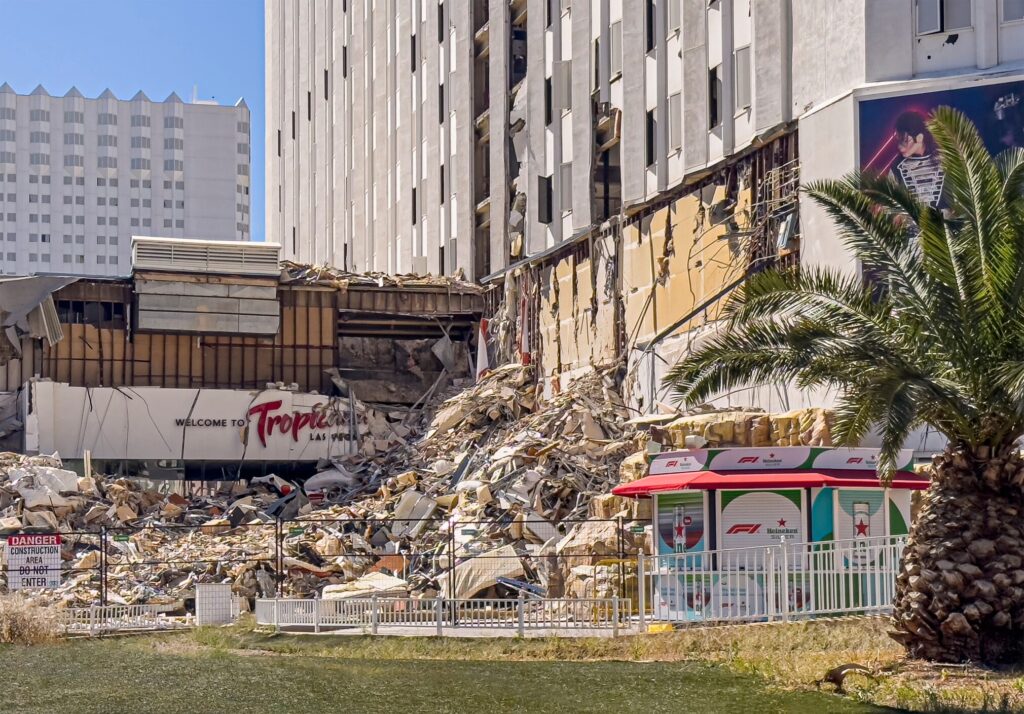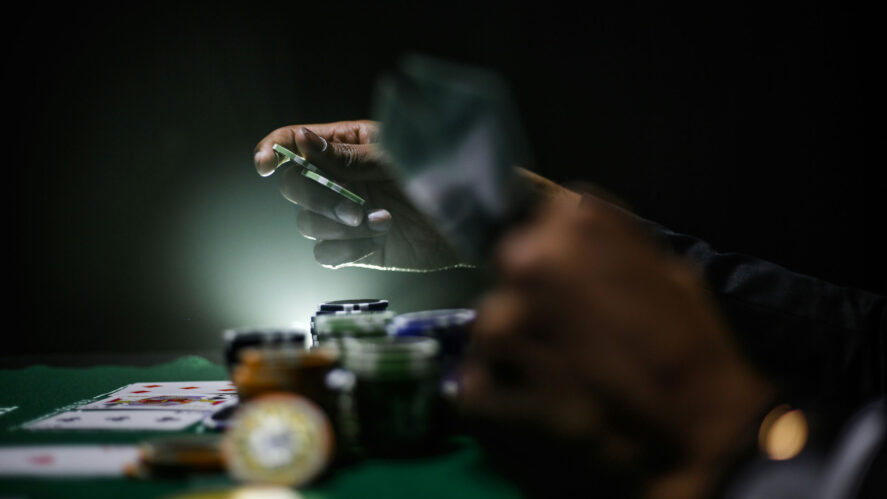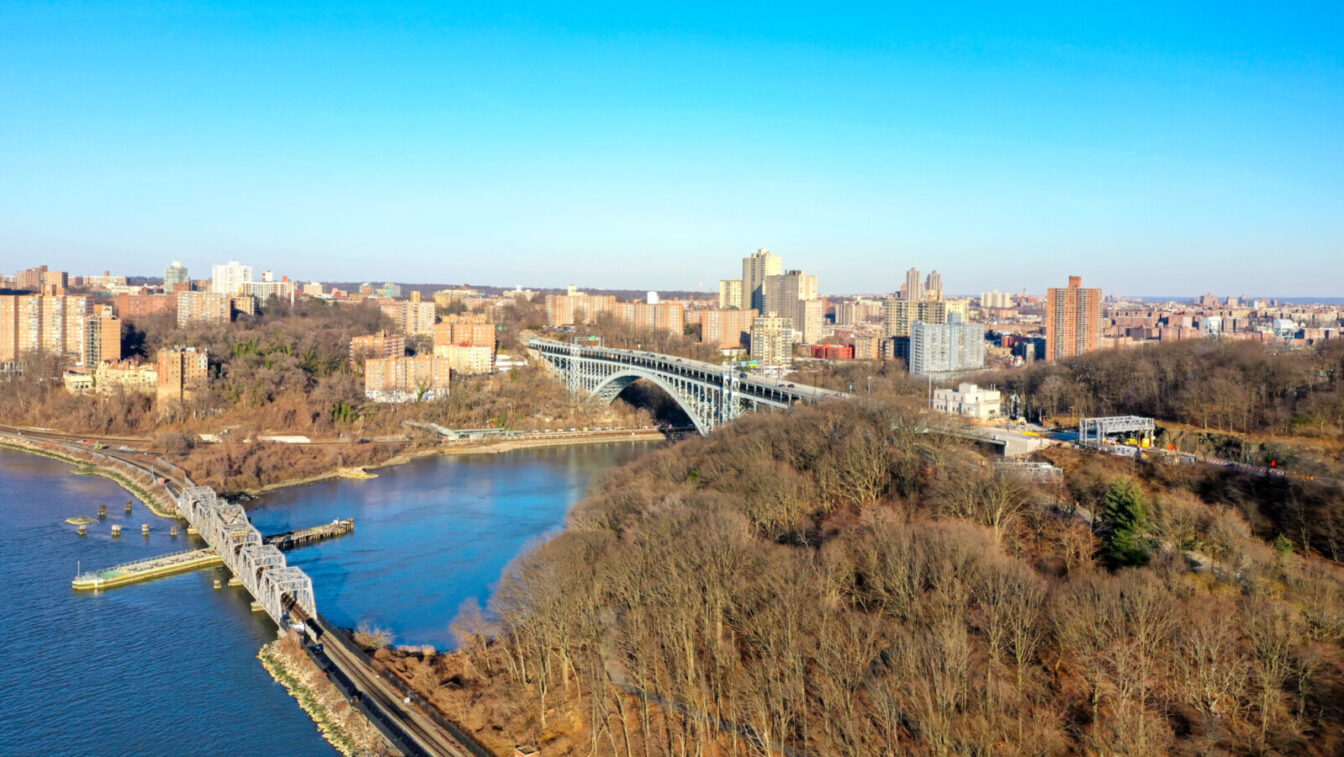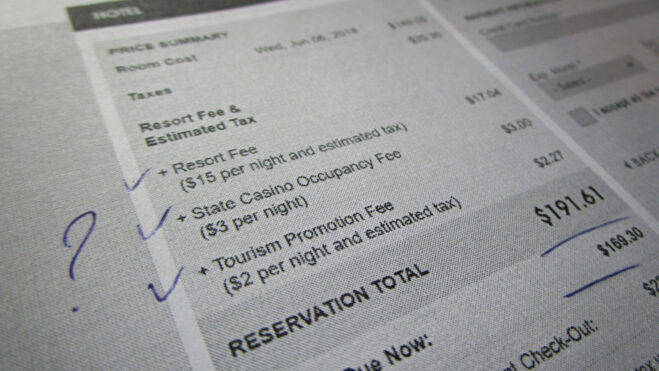Why Bally’s Resort On Vegas Baseball Stadium Site Is Unlikely To Cross Home Plate
The casino company’s struggles in Chicago are just one of several worrying signs
12 min

If you’re contemplating the vacant lot where the Tropicana Las Vegas used to stand, get used to it.
It’s likely to remain empty ground for years to come, thanks to the oversized ambitions of Bally’s Corp. and its chairman, Soo Kim. The man in charge has strapped his company with a raft of projects that could hamstring Bally’s for decades — or cripple it altogether.
This Monday, a symbolic groundbreaking was held for a nine-acre baseball stadium on part of the Tropicana site, where a Bally’s-branded resort is mooted for the rest of the 35-acre parcel. (The underlying land is owned by Gaming & Leisure Properties Inc., or GLPI.)
Kim was not present at the ceremony Monday, but in an article published that day by FDI Intelligence, he was quoted extensively, bracketing his Vegas mega-project in scale (if not intent) with Resorts World and Fontainebleau, two massive resorts near the opposite end of the Las Vegas Strip.
“There will still be hotel rooms, there will still be a casino, there will still be an events space. But the emphasis is actually on the retail entertainment district rather than a straight casino,” Kim enthused.
He might have been wiser to choose different bedmates. Resorts World and Fontainebleau, both of which have emphasized entertainment rather than gambling, have had well-publicized financial and managerial struggles. Also, all the Bally’s project consists of at this point is two renderings and no timeline.
If the baseball stadium finishes on schedule in the spring of 2028, the best-case scenario is that it will sit in the middle of a construction site. That’s because the plan is for the mega-resort to wrap completely around the stadium.
Cart first, horse later
How did this seemingly backward plan come to be? That could require a book to explain fully, but we’ll try.
The Tropicana site has long been problematic. After longtime owner Aztar Corp. could neither pencil out nor pony up for redevelopment, it sold the 50-year-old resort to hotelier Columbia Sussex in 2007.
Trouble was, Columbia Sussex (“ColSux” to its detractors) was a parsimonious operator that tried to run the Tropicana as a grind joint. Maintenance was neglected, labor problems proliferated, and the leverage from the acquisition helped run Columbia Sussex’s new casino arm into bankruptcy. Exit ColSux, enter Onex Corp.
A Canadian private equity firm, Onex tried to make a serious go of the Tropicana as a premier resort under former MGM Resorts International executive Alex Yemenidjian. Unfortunately for Yemenidjian, the direct juxtaposition of the Tropicana with his previous company’s newer, costlier casinos only emphasized the dowager’s dowdiness, a situation Yemenidjian was at pains to remedy. However, none of the many strategies he tried — rebranding, new restaurants, Broadway-style shows — turned the trick for the Trop. Back onto the block she went.
In 2015, the Tropicana fell into the hands of Penn Entertainment. Penn was a regionally focused casino operator attempting to take a gander at the Las Vegas Strip. However, Penn had no Strip experience or cachet and it showed. After struggling for five years to boost its hotel rates, Penn unloaded the Tropicana to GLPI in 2020.

By the time Bally’s and Kim entered the picture, efforts were well in train to bring the Oakland Athletics to Sin City. The team briefly had a “binding” agreement with Station Casinos to redevelop some derelict land further west on Tropicana Avenue. But that accord was unbound in record time when, in 2023, the A’s cut a deal to relocate to the soon-to-be-former Trop site. (Even there, the future of the stadium is in doubt, A’s owner John Fisher having failed to provide $100 million in earnest money.)
Like many another company before it, Bally’s had decided it couldn’t make a go of the aging casino-hotel. The Trop went dark on April 2, 2024, to make way for a promised reinvention of the site under Bally’s aegis. The prospective cost and the question of financing it were simply begged.
Getting to know Bally’s
What is the background of the current Bally’s, one might ask? A former small-time casino operator, Twin River Holdings, it has evolved in 21 years into a ramshackle empire of 19 regional, bargain-niche U.S. casinos, one in Great Britain, a Colorado racing oval, and a Bronx golf course. It became “Bally’s” five years ago by dint of acquiring the name from Caesars Entertainment — hence the reinvention of the former Bally’s Las Vegas as a Horseshoe-branded casino.
Presiding over the Bally’s portfolio is Kim, principal owner of the Standard General hedge fund. He took over the smallish Twin River concern in 2019 and set out on a drastic enlargement of the company. In a two-year span, Kim obtained 11 casinos, from Atlantic City to Lake Tahoe.
For an encore, Bally’s made fateful overtures to Chicago in 2022.
The Windy City and its brief-tenured mayor, Lori Lightfoot, were looking for an urgent cash infusion to underfunded pension plans. Lightfoot hit upon the idea of a downtown mega-casino and held a competition for bids. Unfortunately for her, almost all the major operators were heavily invested elsewhere in Chicagoland and were further put off by the high taxes they would have to pay downtown.
Only three operators submitted bids: Chicago-based Rush Street Gaming, tribally owned Hard Rock International … and Bally’s. Lightfoot went through the motions of appointing a selection board and evaluating bids. That’s when Bally’s made a unilateral donation of $40 million to the City of Chicago.
Lightfoot promptly short-circuited her selection process and unilaterally chose Bally’s to be the Windy City’s lone casino operator. It was not perceived to have hurt the company’s chances that it promised to make 25% of the project available to minority investors.
The truncated selection procedure put both Lightfoot and Bally’s in poor odor. Nor did Lightfoot improve her image by redirecting the location of the interim, temporary Bally’s Casino (opened in September 2023, to middling business) to Medinah Temple, owned by one of her principal campaign donors.
Debuting a temporary casino in a downtown Chicago area light on amenities and (more importantly) parking was the least of Bally’s concerns. Its permanent casino site, on land occupied by the Chicago Tribune’s printing plant, presented a number of construction problems, including when parts of it crumbled into the Chicago River.
It was determined that the project, as initially designed, was unfeasible, the site being insufficient to support the necessary hotel tower. Back to the drawing board, literally. One tower was downsized, and most of the planned rooms transposed to a tower on the opposite end of the site.
Texas-sized trouble
Construction had to be halted yet again when it was discovered that Bally’s had hired a waste-removal company with a history of mob associations to haul away debris. State gaming regulators put a stop to that, and Bally’s $2.7 billion project proceeded to hiccup forward once more. At present, Bally’s is insisting that it will be able to achieve its autumn 2026 opening more or less as scheduled, but GLPI CEO Peter Carlino is telling investors a different story.
Bally’s Chicago became Carlino’s problem when GLPI had to step in and bail out Kim. Laboring under $3.6 billion in long-term debt and at the limit of its borrowing capability, Bally’s simply could not muster the billions needed in Chicago. In return for majority ownership of the eventual megaresort, GLPI agreed to shoulder the bulk of construction cost, putting its own man in charge of building it and executing yet another redesign.
Somebody — perhaps GLPI — is probably going to have to cover a $237 million shortfall, given the fate of the minority-ownership clause. Already greatly undersubscribed (only $13 million raised), the minority set-aside collapsed under the pressure created by two Texas-based litigants, Richard Fisher and Phillip Aronoff. They claimed to be persecuted: would-be investors denied a good-faith chance because of their (white) skin.
Bally’s quickly caved and scrapped the failing minority-investment scheme, but the attorney for the two plaintiffs would not comment on whether his Lone Star clients would now put their money into Bally’s Chicago.
Although the set-aside for minorities and women was an integral part of Bally’s host-community agreement with the City of Chicago, Mayor Brandon Johnson has been conspicuously quiet about its demise. In for a penny, in for $2.7 billion.
As for GLPI, it is already looking to a post-Bally’s future. Truist Securities analyst Barry Jonas spoke with top executives and reported in early June that “we think the development remains behind schedule. We also believe some of GLPI’s stock underperformance relates to BALY credit concerns.”
The most consolation Jonas could manage was “we continue to believe alternative operator demand would exist for Chicago in a bearish scenario where BALY would have to exit.” For its part, Bally’s ducked its earnings call for the second consecutive time and issued pro-forma statements of optimism. Perhaps it had other things on its mind.
Presidential payola
Part of Bally’s evident preoccupation was the fate of its concurrent mega-resort project in the Bronx. In September 2023, it purchased Trump Links from owner Donald Trump for $60 million, removing the controversial Trump moniker the following January.
With these moves, Bally’s injected itself into the contentious and crowded race for a New York City casino license, the eleventh of (at the time) 11 contenders. Two rivals, MGM Empire City in Yonkers, and Resorts World New York City in Queens, were already on the ground, operating. It is widely assumed that they are juiced into two of the three licenses nominally in play.
That left a crowded field for the sole remaining license, even after Las Vegas Sands pulled out of Nassau and Wynn Resorts ankled Manhattan. It remains to be seen whether, in the final winnowing out of casino aspirants, Bally’s will be queried about its thin resumé as a casino developer and problematic financing ability. Instead, it may come a-cropper over some fine print in the Bally Links purchase agreement.
In a document auto-penned at the bottom by Bally’s President George Papanier, the golf course would be retroactively repriced at $175 million were Bally’s to win its casino bid. That’s a potential $115 million payday for the president of the U.S., at 10% interest. Perfumed as a “Gaming Event Fee,” the nine-figure markup nevertheless stuck in some Empire State craws.
For a variety of reasons, possibly including the Trump clause, the Bronx City Council initially balked at “alienating” the golf course as parkland, a necessary prelude to it being forwarded to and beyond the legislature. At this point, New York Mayor Eric Adams intervened on Trump’s behalf, lowering the threshold of needed council votes to a bare majority.
That was good enough for Albany, where lawmakers soon alienated the links, further advancing Bally’s cause. Adams’ greasy quid pro quo with the Trump administration, which had dropped criminal charges against him, did not pass without comment in the Big Apple, where Adams is perceived to be a long shot for re-election. But that is no longer Bally’s problem.
Actually winning the Gotham bid may be a much bigger headache for Bally’s, which faces the prospect yet again of being the dog that caught the car. It has no joint-venture partner in the Bronx (another community set-aside notwithstanding) and no apparent source of funding. It also faces a grudge match against Hard Rock.
The latter is not only well-capitalized, it has a much deeper resumé of casino development, operates in higher price points, and is partnered with New York Mets owner Steve Cohen, who is perceived to have the inside track on the all-important third license.
Soo Kim, for his part, is an acquirer rather than a developer and, until Chicago, Bally’s had never attempting anything of a billion-dollar caliber. So it would have its work cut out for it in the Bronx.
Star-struck
Few would accuse Kim of thinking small. He has even kicked around the notion of entering the Japanese casino derby. It did not deter him that the selection process there is notoriously slow, selective in the extreme. To date, in more than a decade of lobbying Japan, only one casino company — MGM Resorts International — has been approved. The price tag for MGM Osaka? $20 billion.
That makes $2.7 billion for Chicago look like walking-around money. Last spring, with Bally’s Chicago hanging fire and neither the New York casino nor the Las Vegas one anywhere near financed, Kim took a hard left turn into Australia.
Aussie casino operator Star Entertainment was reeling from a series of money-laundering scandals and bleeding cash to the point where insolvency appeared unavoidable. Kim saw an irresistible bargain. For $187 million, he snapped up 56.7% of Star and its three resorts.
Cracks immediately began to fissure in the new-look Star. Bally’s had to dial back the size of its purchase price to $130 million (another “binding” agreement that came unbound) and settle for a minority stake. Star patrons also awoke to a worrisome headline in The Sydney Morning Herald: “Everything You Knew is Over.” Kim was promising to “burn down and start again.”
Rather than seeing Star’s VIP positioning as a learning opportunity for ostensible high-roller casinos in the U.S., Kim took alarm. “We don’t currently operate casinos that look like this,” he stated, aiming to reorient Star’s expensive properties for the mid-market and even grind-joint trade. (“I think there is a happy medium between pubs/clubs and a VIP-focused business,” he told the paper.)
But such issues may be academic next to pressing monetary concerns. A Down Under analysis firm raised worries about Bally’s ability to fund Star’s cash-intensive ongoing operations. (Far-flung Bally’s tends to carry less than $200 million cash on hand.) “The sheer amount of debt it carries raises a question as to whether it has sufficient financial firepower to participate in any significant follow on capital injections if that is required by The Star,” wrote Grant Samuel’s stock boffins.
Another hurdle presenting itself is a pending fine, believed to be in the neighborhood of $260 million, for Star’s past sins. Unless Australian regulators can be persuaded to exercise exceptional leniency, Kim’s apparent bargain is going to come with a massive “balloon payment” to the government. In the meantime …
Vegas unraveling
During Barry Jonas’ visit to GLPI, he was assured that — one way or another — the Tropicana site would be redeveloped. He told potentially fretful stockholders, “We see limited risks for GLPI at the Tropicana site noting the potential for BALY to sell its development rights to another party.” As in Chicago, GLPI was looking beyond Bally’s in order to cover its asset.
When the question of Bally’s risk profile was raised during GLPI’s first-quarter earnings call, a long silence followed. “That’s an interesting question,” eventually said Carlino. Other GLPI executives allowed that Bally’s is more exposed at this time, but that Queen Casino in Baton Rouge “was in a significantly worse position” before and that Bally’s has turned it around.
It was not the first time that stress between Bally’s and its patron had become evident. During an October 2024 earnings call, GLPI COO Brandon Moore said of the Tropicana project, with a laugh, “We’re awaiting the outcome of that [study process], and waiting to find out how many dollars we’ll be asked to provide — and willing to provide.”
By April, Carlino was putting some distance between himself and GLPI’s problem Windy City child: “Chicago is taking a lot more attention from us. It’s going to take a lot of time. Remember, we’re not the developer. Bally’s is.”
Everything appears to hinge on a successful Chicago launch. Retirement of debt ($1.8 billion comes due in 2028) virtually depends on it. If the mega-resort bows to a double-digit return on investment, not only is the company’s future assured but a propitious ROI could be leveraged into financing for Las Vegas and possibly even New York.
So far, the omens are not good. The Medinah Temple is underperforming, averaging $10 million a month, and has has failed to come within shouting distance of statewide leader Rivers Casino, in Des Plaines, which regularly grosses over four times as much. It has also been dwarfed by suburban newcomer Wind Creek Southland, to say nothing of Gary-sited Hard Rock Northern Indiana, which Lightfoot explicitly aimed at in choosing Bally’s.
Kim compounded the burden of expectations last August by saying, “We’re going to be eating a lot of people’s lunches. Most importantly, Indiana.” So far, however, suburban gamblers have quantifiably not changed their playing habits in favor of downtown and Bally’s.
True, Bally’s is at the legislature and Gov. Kathy Hochul’s mercy in the Empire State. Kim has even begun market-testing the excuse that, should he lose, it will be on account of anti-Trump bias.
But Vegas is the acid test of any major gaming firm. Bally’s has already disowned the renderings it trotted out last October and has no budget for what will be an undoubtedly expensive project. Resorts World cost $5 billion, and Fontainebleau ownership will admit to $3.7 billion spent on the 18-year project.
Where Bally’s will get the money remains an open question, Carlino having apparently developed cold feet. Plus, a 26-acre Las Vegas Strip project will be exponentially bigger than anything — even Chicago — that Bally’s has ever attempted, even if built in two phases, as planned. And the Athletics have to come through or risk running a cart and horses through Bally’s (and GLPI’s) grand scheme.
Appropriately for Sin City, it’s a huge gamble. With his stock trading at a lowly $9.75 share at time of publication, it’s Kim’s gambit to win — or lose.
Should he lose, it would be one of the biggest wipeouts Vegas has ever seen.
No pressure, then.






